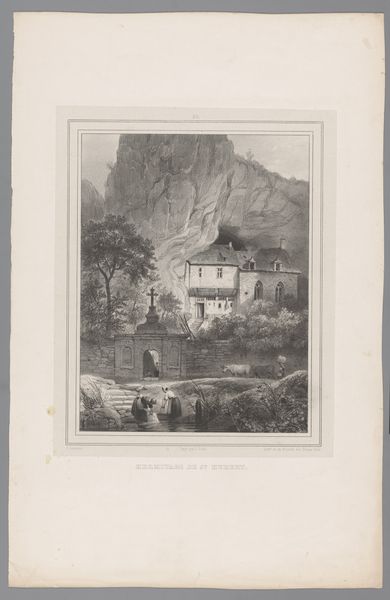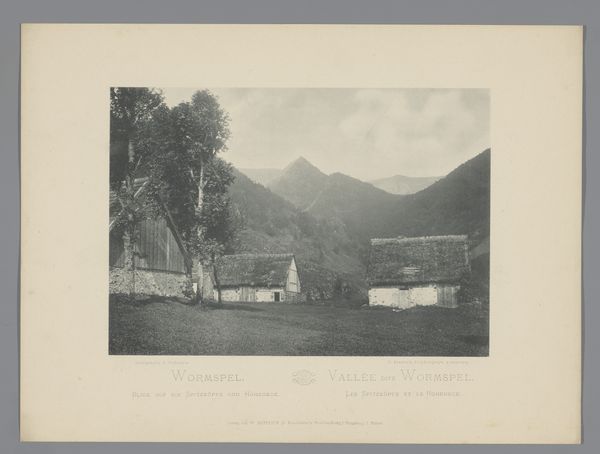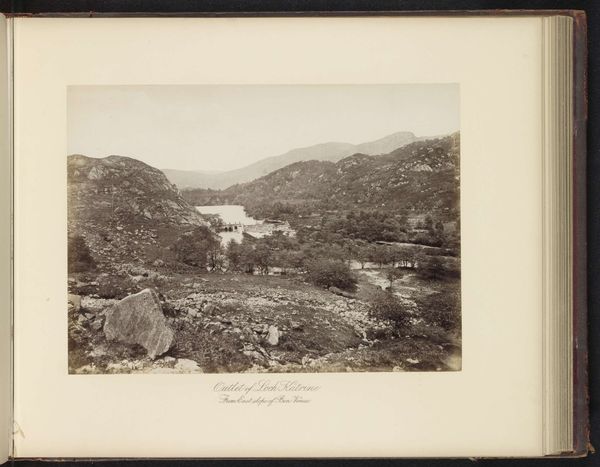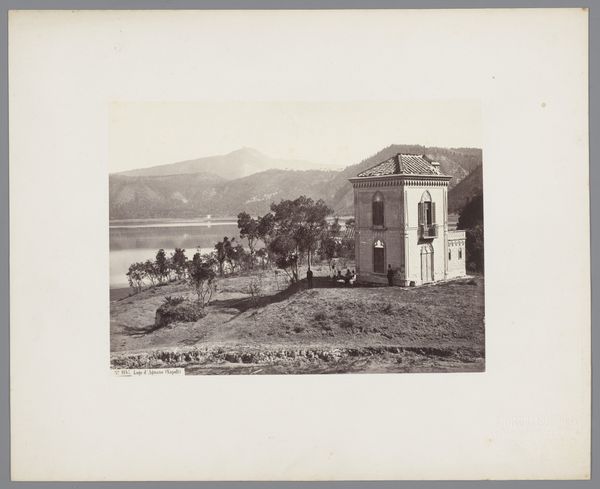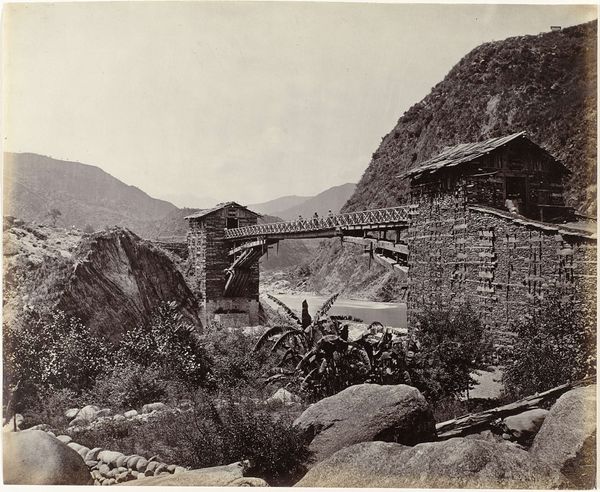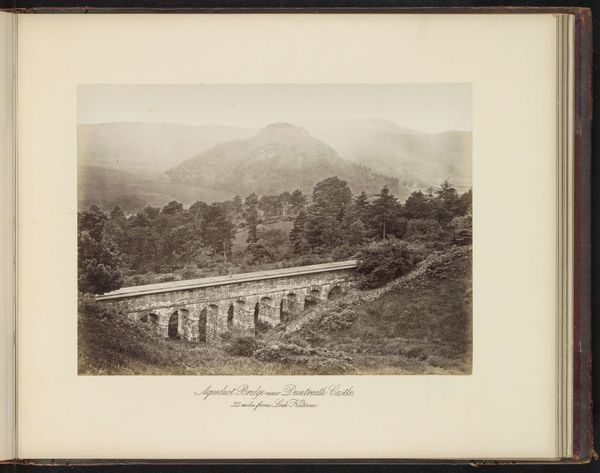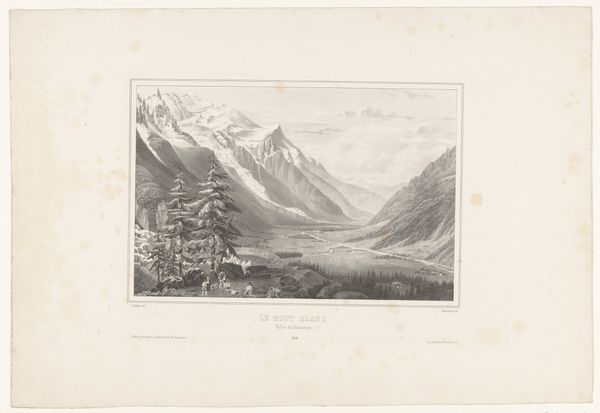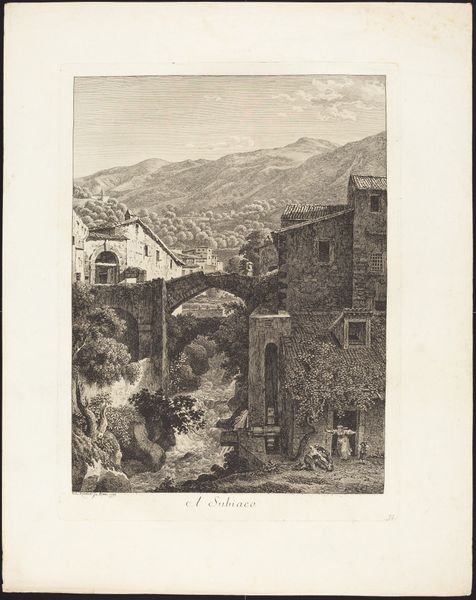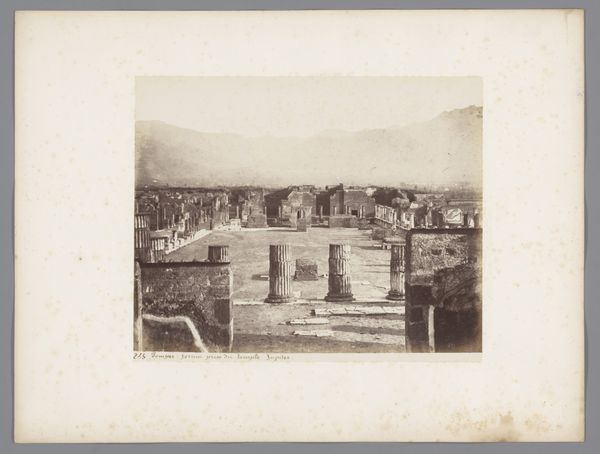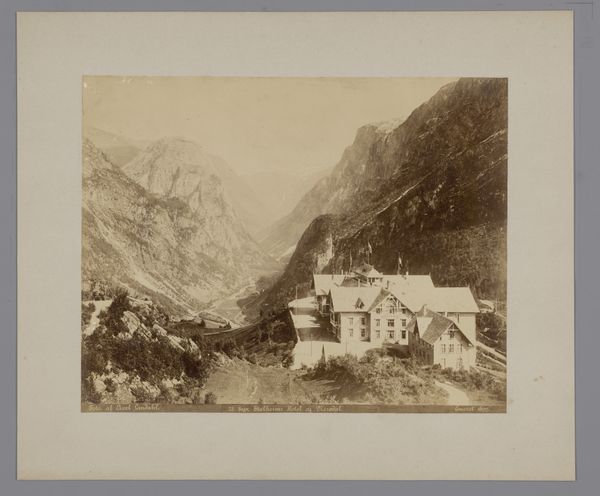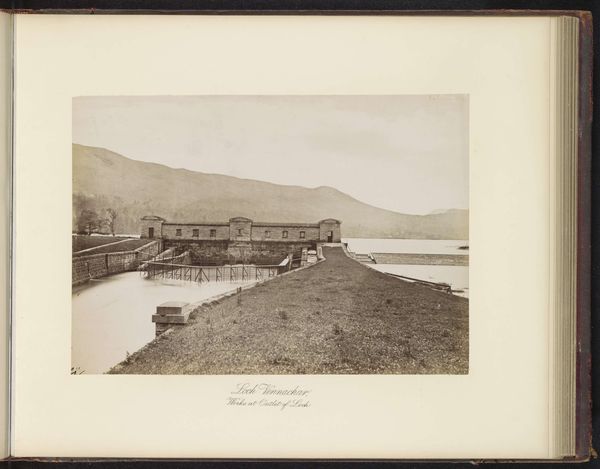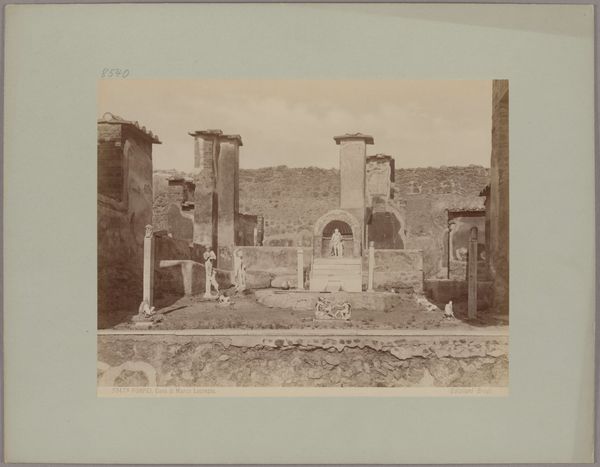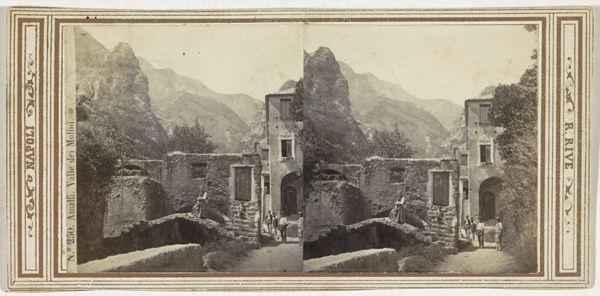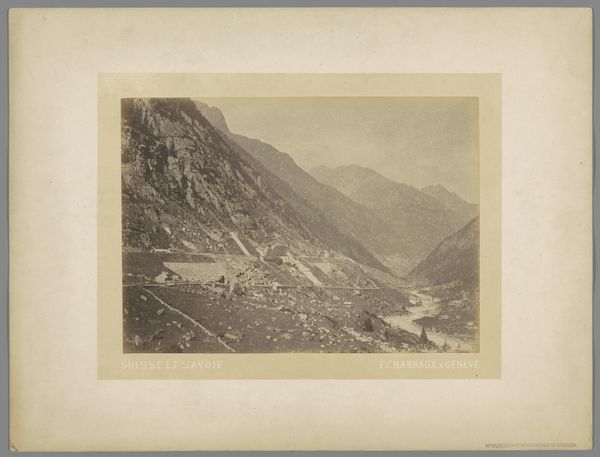
photography
#
landscape
#
photography
#
ancient-mediterranean
#
islamic-art
Dimensions: height 238 mm, width 293 mm, height 393 mm, width 481 mm
Copyright: Rijks Museum: Open Domain
Editor: This photograph, "Exterior of Buniyar temple near Baramulla, Jammu & Kashmir, India" by Samuel Bourne, dating from the 1860s or 70s, presents a striking view of a ruined temple set against a mountainous backdrop. The light feels muted, highlighting the stonework. How would you interpret this work through a historical lens? Curator: The photograph gives us insight into the colonial gaze and the act of documentation during the British Raj. Bourne’s work was not simply landscape photography. It was instrumental in shaping perceptions of India for a Western audience. He depicted ancient architecture and vast landscapes, often framed to emphasize a sense of the sublime. Editor: So, this image could also be viewed as a power statement of the British empire in that era? Curator: Precisely! The photograph romanticizes a distant and ‘ancient’ land. But beyond that, what social functions might such images have fulfilled? How do you think people back in Europe received it? Editor: Probably they’d see India as exotic, maybe even primitive, especially contrasted with Western advancement during that period. Was Bourne conscious of this, or simply recording what he saw? Curator: That’s the core question. Bourne, like many photographers of his time, straddled the line between objective observer and participant in a system of representation. The photographs circulated through exhibitions, books, and albums, contributing to a specific image of India. These photographs were essential in visually cataloging and thereby, in a sense, possessing India. Editor: It’s unsettling to think that such a seemingly beautiful picture could carry such implications. It's more than just architectural documentation; it's a glimpse into a specific, politically charged moment. Curator: Exactly! And it encourages us to question whose perspective is centered and what narratives are being constructed and circulated through these images even today.
Comments
No comments
Be the first to comment and join the conversation on the ultimate creative platform.
